Through the Jingdezhen Imperial Kiln Museum, Studio Zhu-Pei attempts to rediscover the past
The project, a porcelain museum focusing on Imperial Kiln artefacts, is located in the centre of the historical area in Jingdezhen, adjacent to the Imperial Kiln Ruins of Ming Dynasty. It is surrounded by various historical buildings, including old houses, traditional kilns, factories and residential buildings of the late 1990s. Those buildings have shaped a rich and diverse urban fabric and formed a unique site with enriching historical contexts.
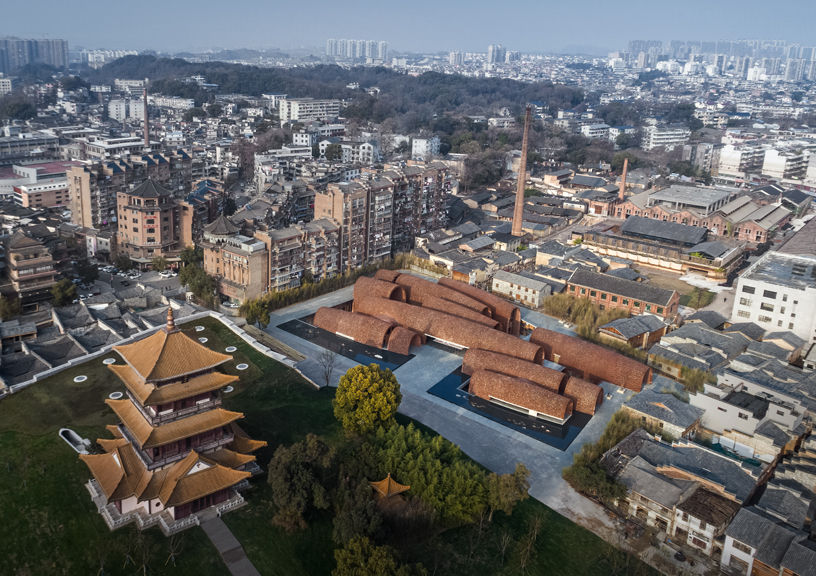
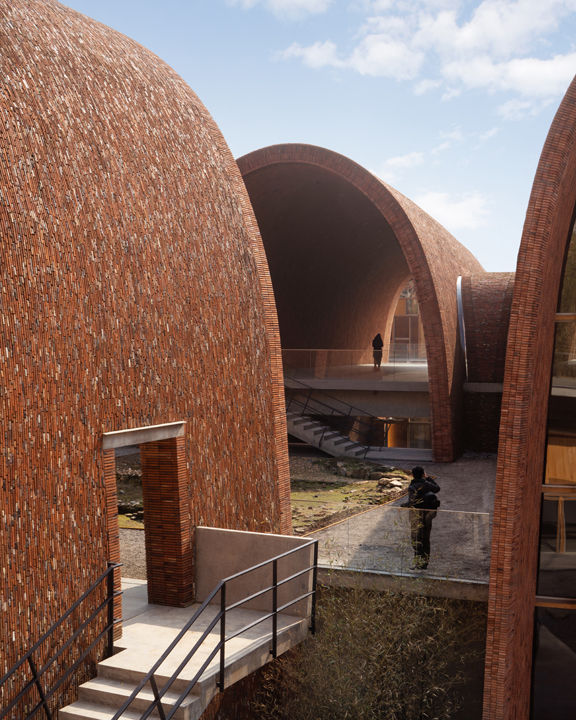
The concept of the museum focuses on rediscovering the roots of Jingdezhen and the innovative ideas that defines the revolutionary thinking of the museum experience. As an essential structure for the city’s industrial production and as a central place for both public life and cultural memory, the brick kiln has entered the entire city history as architectural form. The prototype of the museum is translated from traditional brick kiln; it comprises eight brick vaults base on the traditional form of the kilns. Each of the brick vaults is of a different size, length and curvature, calling to mind the special and material quality of the kilns. The ground level and lower level connect all vaults and courtyards together with a strong local cultural grounding.

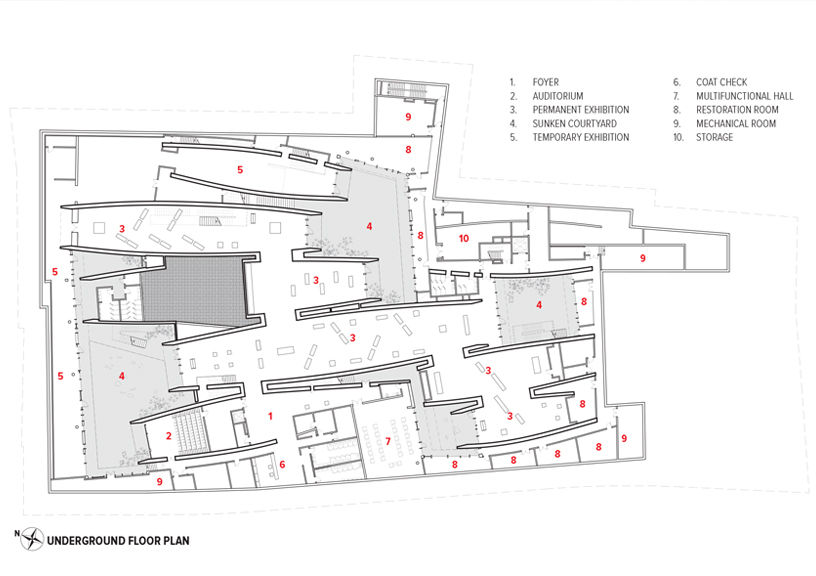

Jingdezhen is hot in summer, people have to survive under shade with ventilation, and this is the reason why narrow alley with roof overhand and small vertical courtyard house both create shade and wind tunnels to let people feel comfortable. The long axis of eight brick vaults is arranged along the north-south direction with tow ends open. The arrangement of the open vault and enclosed ones, can not only block the sunlight on the west side, but also transform each vault into a wind tunnel, allowing the cool breeze to flow in and to capture the most frequent south-north wind in summer. The five sunken courtyards of different scales create the chimney effect as in the local vertical courtyards. A three-dimensional wind installation is thus created by both the tunnels where wind blows horizontally and the chimney effect that functions vertically.
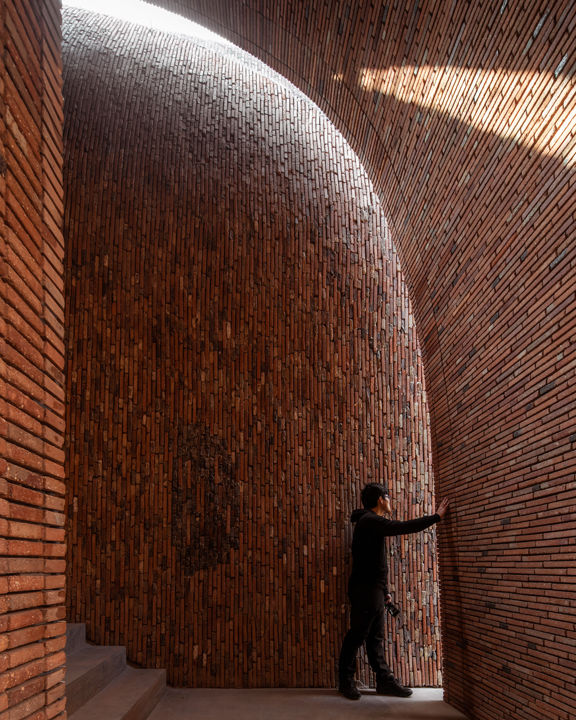
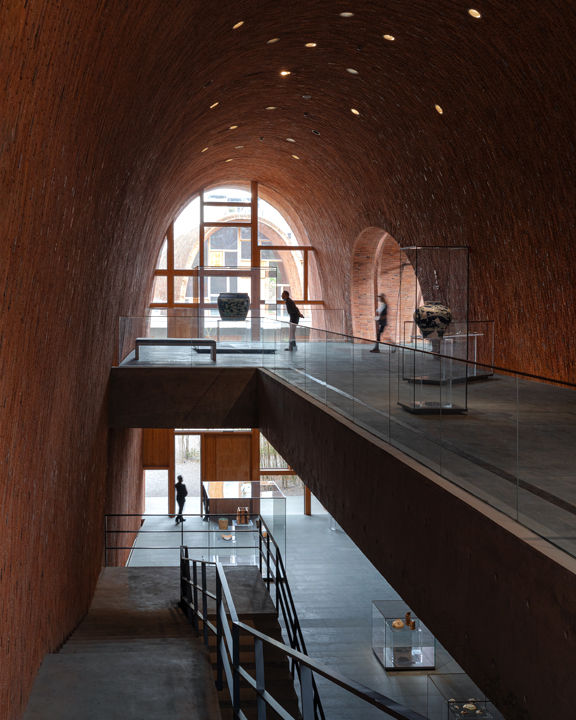
Constructing an interior space that is full of natural light is the primary consideration. First of all, the alternative arrangement of open vaults and enclosed vaults creates a rhythmic sensation of light and shade while walking through the museum. Secondly, the five sunken courtyards channel light down to the floor, completely subvert people’s feelings of the underground space. Moreover, the interior natural light is achieved through the opening of both the end of the vaults, the horizontal slits alongside the floor, the slits between adjacent two vaults and the cylindrical skylights. With all these special windows and the porosity of the building, light diffuses into the interior space of the museum through different dimensions and ways. Natural light is a medium that weaves people, exhibits and architecture together.
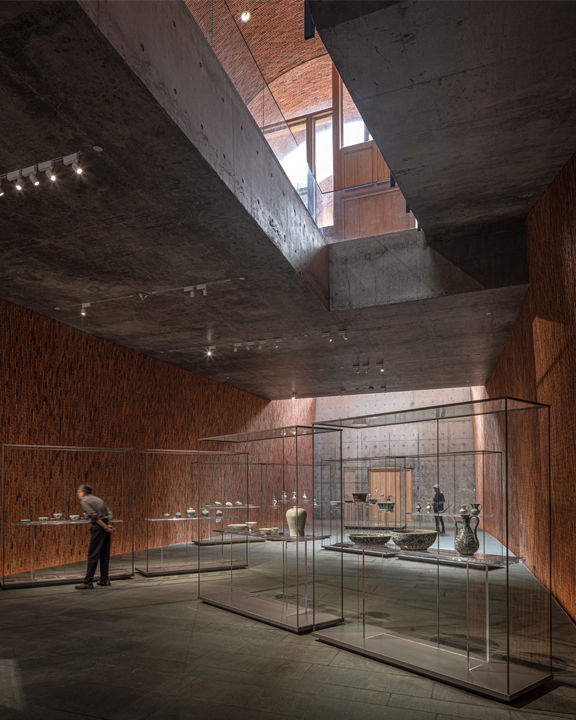

The basic structure of the museum is arched structure system, it is made up of concrete poured in between two layers masonry brick walls. Using recycled kiln bricks to build houses is a significant character in Jingdezhen because kilns have to be demolished every two or three years in order to keep a certain thermal performance. The recycled old kiln bricks are mixed with new bricks together to reflect the local culture of construction.
This interweaving of nature, ruins, wind, light, sound and new and old materials must arouse interest, curiosity, create new questions and give new answers by interacting with the mind of people who inevitably evoke memories and enjoy a unique experience. The past cannot be erased but rewritten by recounting with a new awareness and maturity, a sort of contemporary archaeology.

Photo credit: Schranimage, Tian Fangfang, Zhang Qinquan
Factfile
Project: Jingdezhen Imperial Kiln Museum
Architects: Studio Zhu-Pei
Client: Jingdezhen Municipal Bureau of Culture Radio Television Press Publication and Tourism, Jingdezhen Ceramic Culture Tourism Group
Architecture, Interior and Landscape Design: Studio Zhu-Pei
Cooperative Design: Architectural Design and Research Institute of Tsinghua University
Structure: Reinforced concrete arch shell and brick arch
Design in Charge: Zhu Pei
Front Criticism: Zhou Rong
Art Consultant: Wang Mingxian, Li Xiangning
Design Team: You Changchen, Han Mo, He Fan, Shuhei Nakamura, Liu Ling, Wu Zhigang, Zhang Shun, Du Yang, Yang Shengchen, Chen Yida, He Chenglong, Ding Xinyue
Consultants: Structural, MEP and Green Building: Architectural Design and Research Institute of Tsinghua University
Facade: Shenzhen Dadi Facade Technology CO., LTD.
Lighting: Ning Field Lighting Design CO., LTD.
Acoustic: Building Science & Technology Institute, Zhejiang University; Main Contractor: China Construction First Group Corporation Limited, Huajiang Construction CO., LTD of China Construction First Group
Area: 10,370sq m
